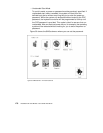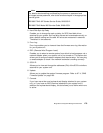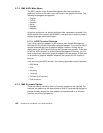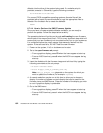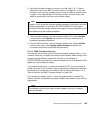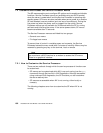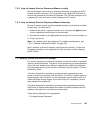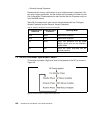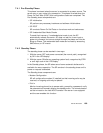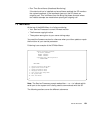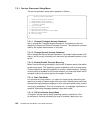
© Copyright IBM Corp. 1998 185
Chapter 7. Service Processor
This chapter gives you an overview of the functionality of the Service
Processor (SP) and how to use the SP. The SP is currently available on the
Model 260, but not the Model 150.
7.1 Introduction to the Service Processor
The Service Processor is a hardware component that is imbedded onto the
I/O planar of the Model 260.
The SP has the capability to control the system NVRAM and real time clock
interface. The SP card has a interface to assist with the bring-up and testing
of complex processor systems. In addition, the SP has the capability to take
over either S1 or S2 serial ports on the I/O planar.
The SP card can use S1 or S2 to make a call home through an externally
attached modem when it detects one of the following conditions:
• System firmware surveillance failure
• Operating system surveillance failure
• Critical environmental failures
• Restarts
The SP also has the capability to answer modem calls and generate a host
interface to an external caller. The host functions of the SP card are
contained in flash memory, resident on the SP card. The host modes are
password protected and feature many levels of menus with support for
several languages.
Machine diagnostics can be launched from the host session, allowing you to
remotely diagnose the status of the server. Almost all of this function is
available even if the main processor is completely dead. The SP provides an
immediate means to diagnose, check status, and sense the operational
conditions of a remote server.
The Model 260 can also be booted remotely, and a remote user may enter the
Systems Management Services (SMS) screens (only in ASCII mode).




